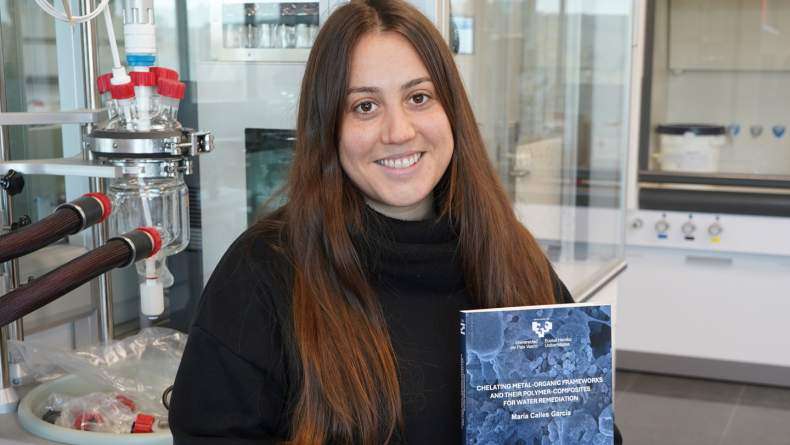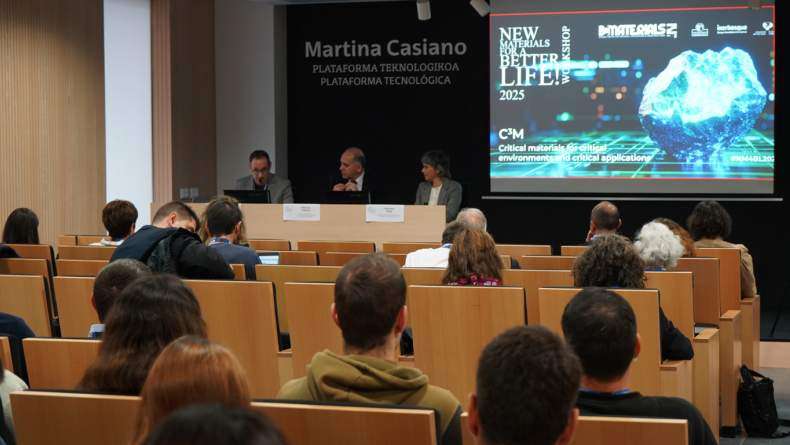BCMaterials Fortnightly Seminar #92 Clara García - Paula Sánchez

CLARA GARCÍA
(BCMATERIALS)
Influence of carbonaceous nanofiller type and content on the piezoresistive response of polymer based composites for sensing applications
Piezoresistive (PR) polymer based composites with carbon nanostructures are increasingly being developed for a wide variety of sensing applications. The most studied carbon nanostructures have been carbon nanofibers and nanotubes and, recently, graphene and their intrinsic properties and aspect ratio strongly influence the percolation threshold and the PR response of the corresponding composites. To produce transparent, flexible or highly stretchable PR sensors, thermoplastic and elastomer polymers can be used as matrices. Triblock copolymer styrene/ethylene-butylene/styrene (SEBS) combine the mechanical properties of the rubbers without vulcanization. Within the thermoplastics, semicrystalline poly(vinylidene fluoride) (PVDF) show excellent electroactive properties. Conductive composites have been prepared by solvent casting based on SEBS and PVDF and conductive fillers (nanotubes and graphene). The influence of polymer and filler type and content will be presented and discussed as well as the functional PR response that can reach gage factors up to 100 and maximum functional deformations above 20%, being therefore suitable for the desired applicationsPAULA SÁNCHEZ
(BCMATERIALS)
PolySchiff bases as anodes for sodium ion batteries
Sodium ion batteries stand out as an alternative to the lithium based technology due to wide global abundance of sodium and potential cost advantage. Organic electrode materials are interesting due to the cost saving in terms of lower price of the precursors and cheaper synthetic methodology. It has been reported in the literature that Schiff-base entities attached to an aromatic ring by its carbon atom (-N=CH-Ph-HC=N-) show redox activity at low potentials. Herein we report on the synthesis of a family of poly-Schiff base/oligoether terpolymers that exhibit a double role as they show electrochemical activity delivering a reversible capacity of 200 mAh/g along with good binding properties. This is due to the incorporation of poly(ethylene oxide) (PEO) linkers within the polymer chain and side groups providing the polymer with flexibility and ionic conductivity.
Related news
María Calles, New Doctor of BCMaterials
We would like to congratulate María Calles García for obtaining her PhDs in Materials Science and Technology from the UPV/EHU. On December 4 made a brilliant defense of her thesis titled ‘Chelating…Invited Talk with Barcelona Microelectronics Institute’s researchers (December 3)
On December 3 at 12:00 PM, in the Martina Casiano Auditorium in Leioa, BCMaterials will host senior researchers Antón Guimerà and Xavier Illa from the Barcelona Microelectronics Institute (IMB-CNM,…Invited Talk by Liu Yao on Lithium-Metal Batteries (December 2)
Next Monday, December 2, Liu Yao, professor at the Shanghai Institute of Applied Physics, will give an invited lecture at BCMaterials entitled ‘Li-Metal Batteries: From Liquid to Solid-State’. The…Success of BCMaterials’ Annual Workshop on Critical Materials
The 2025 edition of BCMaterials’ annual workshop gathered nearly one hundred participants on November 19 in Leioa to review the latest advances and discuss critical materials, their applications, and…



